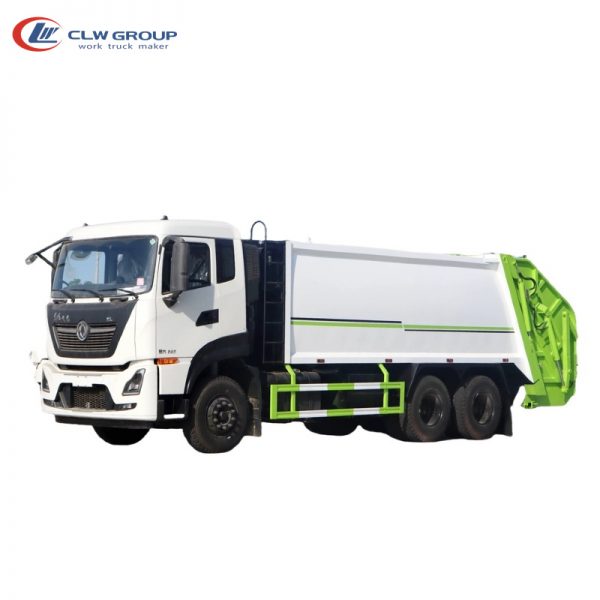Introduction
Tanker trucks play a crucial role in the transportation of various liquids and gases across the globe. These specialized vehicles are designed to safely and efficiently transport hazardous materials, fuel, chemicals, water, and other liquids from one location to another. At the heart of every tanker truck lies its chassis, the structural framework that supports the tank and all other components of the vehicle. In this article, we will explore the evolution and importance of tanker truck chassis in the transportation industry, examining how advancements in technology and design have improved safety, efficiency, and performance.
Historical Development of Tanker Truck Chassis
The concept of tanker trucks dates back to the early 20th century when the need for transporting liquids in bulk arose. Initially, tanker trucks were built on standard truck chassis with rudimentary designs to accommodate cylindrical tanks. These early tankers were often prone to accidents and leaks due to the lack of proper safety features and regulations.
As the demand for liquid transportation grew, manufacturers began to develop specialized tanker truck chassis to address the unique requirements of carrying hazardous materials. The evolution of tanker truck chassis saw the introduction of reinforced frames, improved suspension systems, and enhanced braking mechanisms to ensure stability and safety during transportation.
In the mid-20th century, advancements in materials technology led to the development of lightweight yet durable materials such as high-strength steel and aluminum, which revolutionized the construction of tanker truck chassis. These materials allowed for the creation of stronger and more efficient chassis designs that could carry larger tank capacities while reducing overall weight and increasing fuel efficiency.
https://www.worktruckmaker.com/water-tank-truck/ , tanker truck chassis are designed with a focus on safety, performance, and durability. Modern chassis designs incorporate advanced engineering principles and technologies to meet the stringent regulations governing the transportation of hazardous materials. Key features of modern tanker truck chassis include:
1. Structural Integrity: Tanker truck chassis are built with high-strength materials such as carbon steel, stainless steel, and aluminum to ensure structural integrity and durability. These materials are chosen for their ability to withstand the stresses and pressures exerted on the chassis during transportation.
2. Reinforced Frames: Tanker truck chassis are equipped with reinforced frames that provide rigidity and stability to the vehicle. The frame acts as the backbone of the chassis, supporting the weight of the tank and its contents while minimizing flex and torsion.
3. Suspension Systems: Modern tanker truck chassis are equipped with advanced suspension systems that help absorb shocks and vibrations encountered during transportation. These systems improve ride comfort, stability, and handling, especially when navigating rough terrain or uneven roads.
4. Braking Mechanisms: Safety is paramount in the design of tanker truck chassis, and braking systems play a critical role in preventing accidents and ensuring vehicle control. Modern tanker trucks are equipped with hydraulic or air brake systems that provide reliable stopping power under varying load conditions.
5. Compliance with Regulations: Tanker truck chassis are designed in compliance with industry standards and regulations set forth by organizations such as the Department of Transportation (DOT) and the National Tank Truck Carriers (NTTC). These regulations govern the design, construction, and operation of tanker trucks to ensure the safe transportation of hazardous materials.
Importance of Tanker Truck Chassis in the Transportation Industry
The tanker truck chassis is the foundation upon which the entire vehicle is built, playing a crucial role in the safe and efficient transportation of liquids and gases. The importance of tanker truck chassis in the transportation industry can be summarized as follows:

1. Safety: The structural integrity and design of the tanker truck chassis are essential for ensuring the safety of both the vehicle and its surroundings. A well-engineered chassis minimizes the risk of accidents, leaks, and spills, thereby protecting the environment and public health.
2. Efficiency: Tanker truck chassis are designed to maximize payload capacity while minimizing weight and fuel consumption. An efficient chassis design allows for the transportation of larger volumes of liquids and gases, reducing the number of trips required and improving overall operational efficiency.
3. Versatility: Tanker truck chassis can be customized to accommodate a wide range of tank sizes and configurations, making them versatile for transporting different types of liquids and gases. This flexibility allows for greater adaptability to changing industry demands and customer requirements.
4. Durability: Tanker truck chassis are built to withstand the rigors of daily operation, including exposure to harsh weather conditions, rough roads, and heavy loads. The use of high-quality materials and construction techniques ensures the longevity and durability of the chassis, reducing maintenance costs and downtime.
5. Regulatory Compliance: Tanker truck chassis must adhere to strict regulations and safety standards to ensure compliance with transportation laws and regulations. By meeting these requirements, tanker truck chassis help prevent accidents, protect the environment, and maintain the integrity of the supply chain.
Conclusion
In conclusion, tanker truck chassis play a vital role in the transportation of liquids and gases, providing the structural foundation for safe and efficient operations. The evolution of tanker truck chassis has seen significant advancements in materials, design, and technology, leading to improved safety, performance, and compliance with regulations. As the transportation industry continues to evolve, tanker truck chassis will remain a critical component in the safe and reliable delivery of hazardous materials across the globe.
